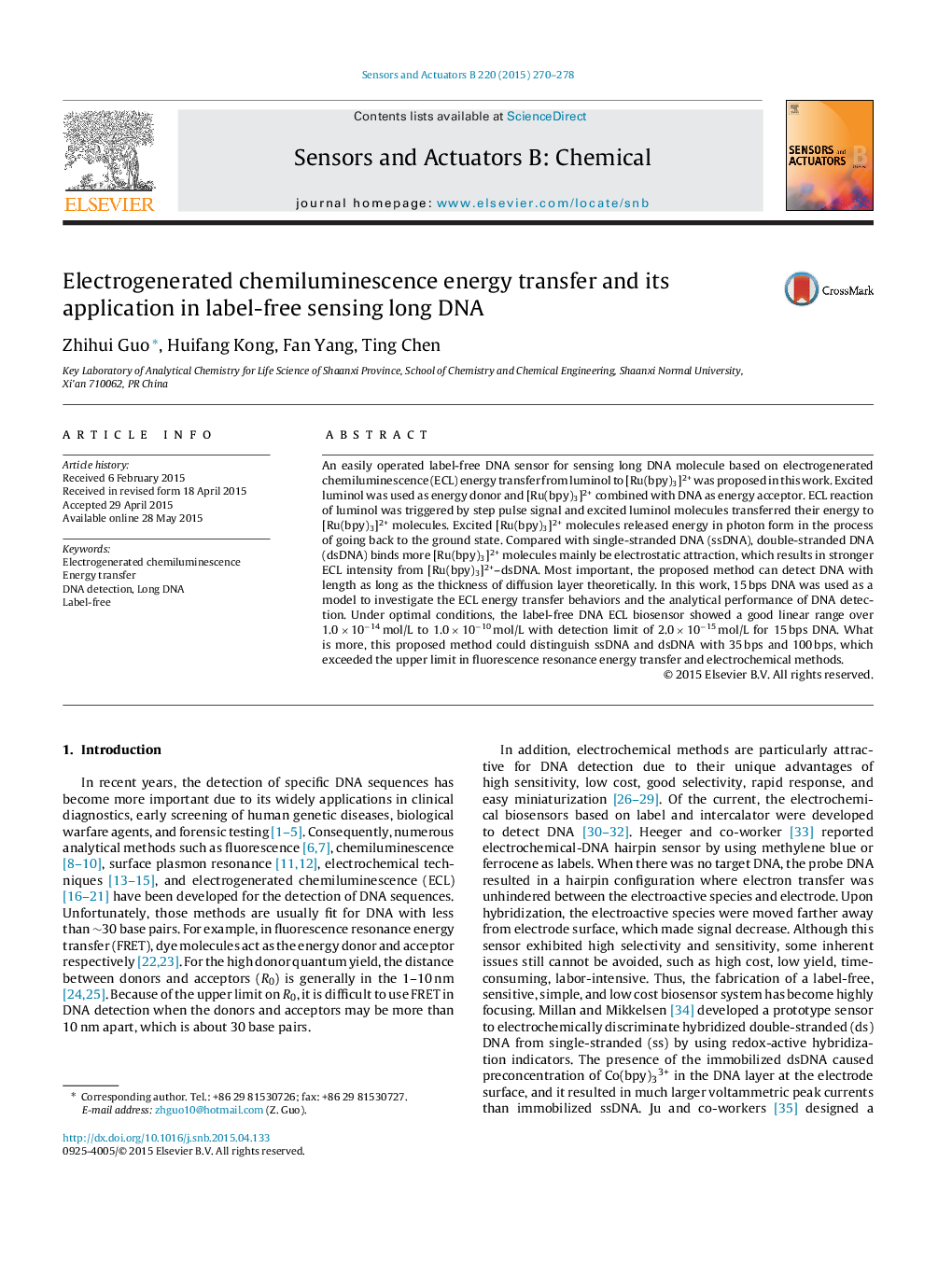| Article ID | Journal | Published Year | Pages | File Type |
|---|---|---|---|---|
| 7145562 | Sensors and Actuators B: Chemical | 2015 | 9 Pages |
Abstract
An easily operated label-free DNA sensor for sensing long DNA molecule based on electrogenerated chemiluminescence (ECL) energy transfer from luminol to [Ru(bpy)3]2+ was proposed in this work. Excited luminol was used as energy donor and [Ru(bpy)3]2+ combined with DNA as energy acceptor. ECL reaction of luminol was triggered by step pulse signal and excited luminol molecules transferred their energy to [Ru(bpy)3]2+ molecules. Excited [Ru(bpy)3]2+ molecules released energy in photon form in the process of going back to the ground state. Compared with single-stranded DNA (ssDNA), double-stranded DNA (dsDNA) binds more [Ru(bpy)3]2+ molecules mainly be electrostatic attraction, which results in stronger ECL intensity from [Ru(bpy)3]2+-dsDNA. Most important, the proposed method can detect DNA with length as long as the thickness of diffusion layer theoretically. In this work, 15Â bps DNA was used as a model to investigate the ECL energy transfer behaviors and the analytical performance of DNA detection. Under optimal conditions, the label-free DNA ECL biosensor showed a good linear range over 1.0Â ÃÂ 10â14Â mol/L to 1.0Â ÃÂ 10â10Â mol/L with detection limit of 2.0Â ÃÂ 10â15Â mol/L for 15Â bps DNA. What is more, this proposed method could distinguish ssDNA and dsDNA with 35Â bps and 100Â bps, which exceeded the upper limit in fluorescence resonance energy transfer and electrochemical methods.
Related Topics
Physical Sciences and Engineering
Chemistry
Analytical Chemistry
Authors
Zhihui Guo, Huifang Kong, Fan Yang, Ting Chen,
